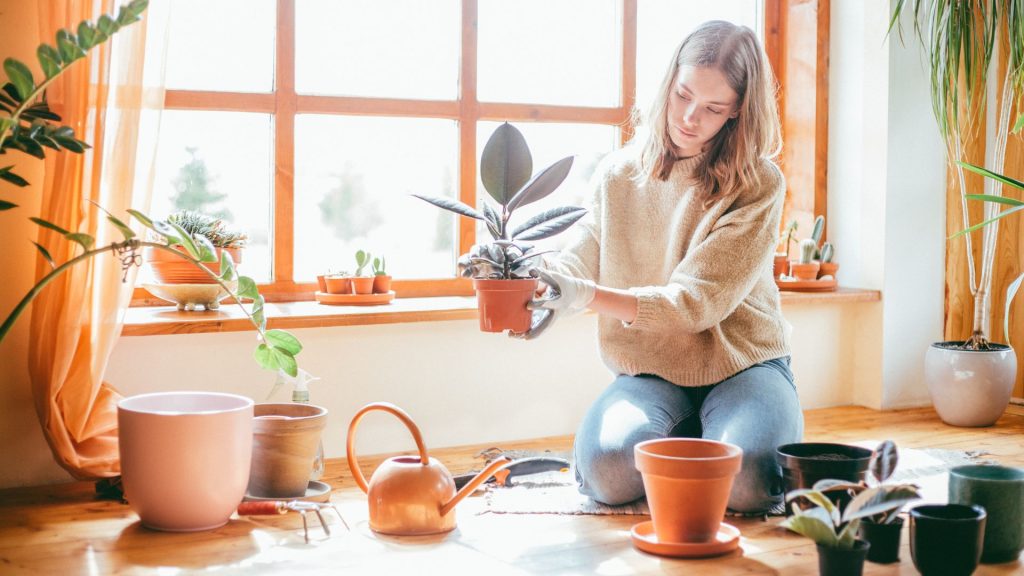Ficus elastica is another name for a rubber tree. These massive trees may reach heights of 50 feet (15 meters). Despite its tropical appearance, indoor care for a rubber plant is not as difficult as it might seem at first glance.
Ficus rubber is found in abundance in India, Indonesia, and Nepal, and since ancient times it has made a huge impression on foreigners. Of course, looking at a modest tree at home, it is hard to believe that in the natural environment these plants could grow up to 40 m (164 feet) in height. In addition, having aerial roots, they could braid other trees and even intertwine them into bridges. As a home plant, rubber ficus was bred in the 19th century, and since then has become a frequent guest in offices and apartments. Today we will learn how to grow rubber plants and how to care for them.
Are Rubber Plants Easy to Care For?
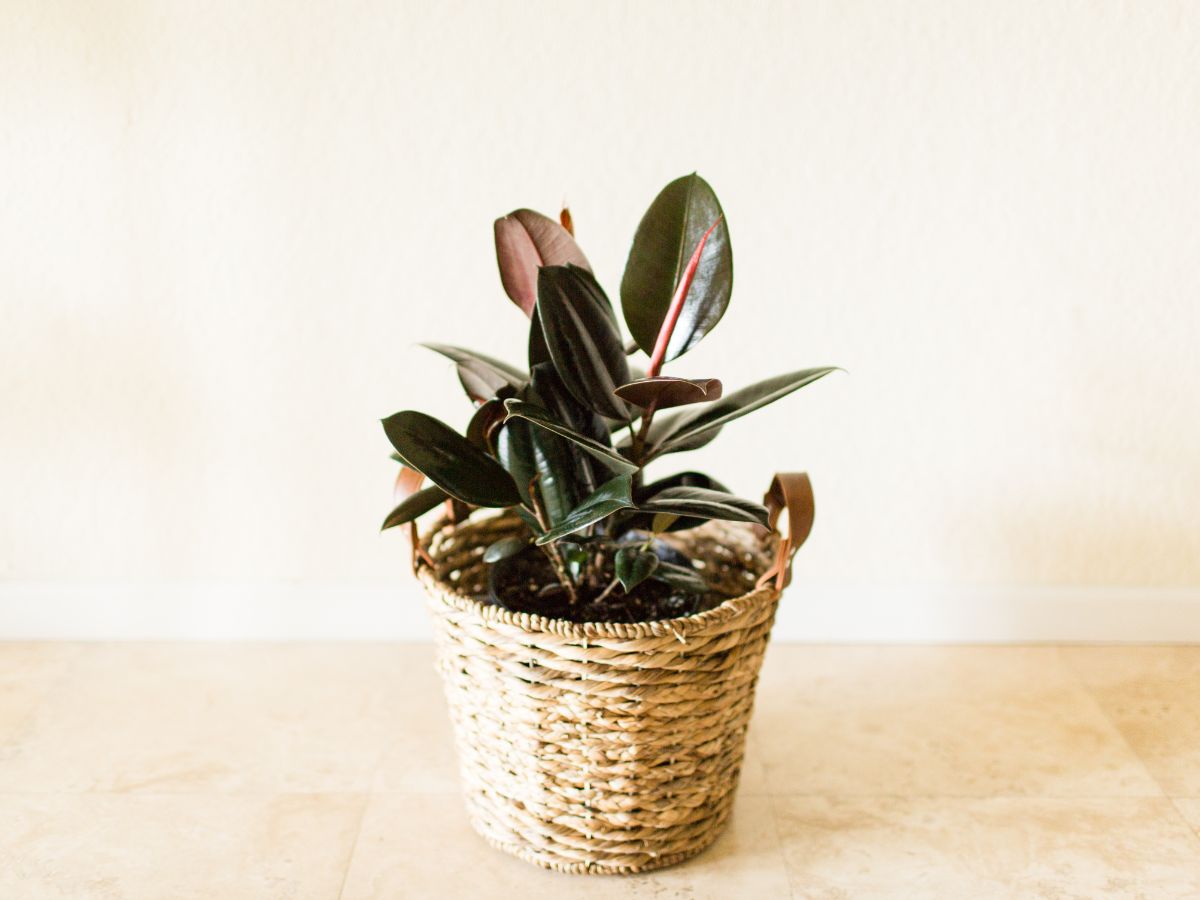
Rubber plant maintenance is simple if you keep an eye on your plant and respect its demand for balance. If you want to amaze your visitors with a tall houseplant, rubber plants are definitely worth the effort.
How to Water Rubber Plant?
Water balance is very important for the rubber tree plant. How often to water the rubber plant? It should be maintained wet and watered at least once a week during the growing season. It’s also a good idea to spray your rubber tree houseplant’s leaves with water or wipe them clean with a moist cloth. If you overwater the rubber plant, the leaves will become yellow and brown and eventually fall off. Cut a slit in the node where a leaf came off on a rubber tree houseplant to encourage new growth. This will speed up the growth of a new leaf. It may only need to be watered once or twice a month during the dormant season. If the leaves start to droop but don’t fall off, gradually increase the amount of water you give the rubber tree until the leaves perk back up.
Do Rubber Plants Need a Lot of Light?
This indoor tree prefers a lot of diffused sunlight and feels most comfortable in a bright place. Do rubber plants need direct sunlight? No, no, and one more time no! For the normal growth and development of a rubber plant, it is necessary to choose the best light option. You should not put a pot with a plant in the open sun, it is especially problematic to keep a large plant in the sun in the summer. Ficus leaf blades in extreme heat can get burns that cannot be cured.
If the plant is in the shade – the stems are strongly drawn out, the distance between the leaves increases, the color of the leaf blades brightens. Such a ficus elastica looks very messy. With a strong lack of light, the tree begins to lose leaves catastrophically quickly.
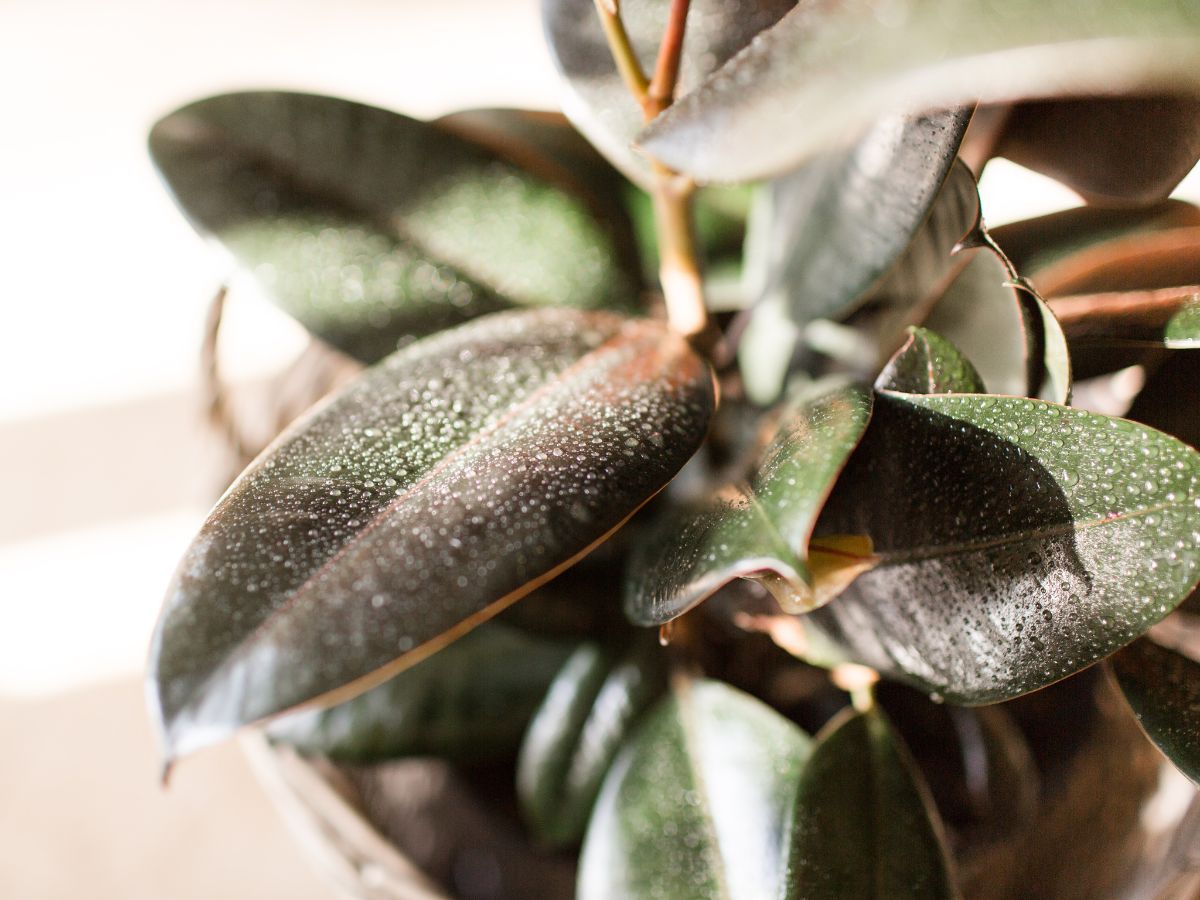
It should be noted that variegated ficus species are more demanding on lighting since their leaves contain less chlorophyll. The plant can put up with shading for some time, but as the growth rate in such conditions decreases sharply, the decorative effect of the plant worsens.
Soil for Rubber Plants
Because rubber plants dislike sitting in wet soil, well-draining and well-aerated potting soil are essential. A suitable mix is 1 part peat, 1 part pine bark, and 1 part gritty sand (or perlite).
Does Rubber Plant Like Humidity?
Yes, moreover, it is necessary if you want to grow a beautiful and healthy plant. When kept in room conditions, the rubber-bearing ficus must be sprayed periodically. This is because dry air from heating radiators can cause the leaves to dry out and the spread of the spider mite, which is difficult to immediately detect on thick leaves due to its microscopic size. In summer, the plant suffers from heat and dry air – it is necessary to spray the crown frequently with settled water. You can increase the humidity in the room where the home tree grows with the help of humidifiers. In winter, you can wipe the leaves with a damp sponge, moisturizing and removing dust.
Does It Need to Be Fertilized?
Like any other plant, the rubbery ficus needs a small amount of fertilizer to get massive leaves. The plant should be fed in summer and spring, using a dilute liquid fertilizer, every two weeks. Avoid fertilizing newly transplanted and new plants for 4-6 months. Plants should not be fertilized in winter because they do not produce much growth during that season.
Pruning a Rubber Plant
Pruning a plant helps it branch out, which gives it a fuller shape. Also, it makes the foliage grow denser, bringing a unique touch of elegance. Rubber ficus can be pruned once or twice a year. The best time for this is the end of winter and summer. When pruning, keep in mind that you don’t have to prune the entire tree, a light pruning is always sufficient. With frequent pruning, the plant will develop a more branched style that will give it a broad and bushy appearance.
How to Propagate Rubber Plants?
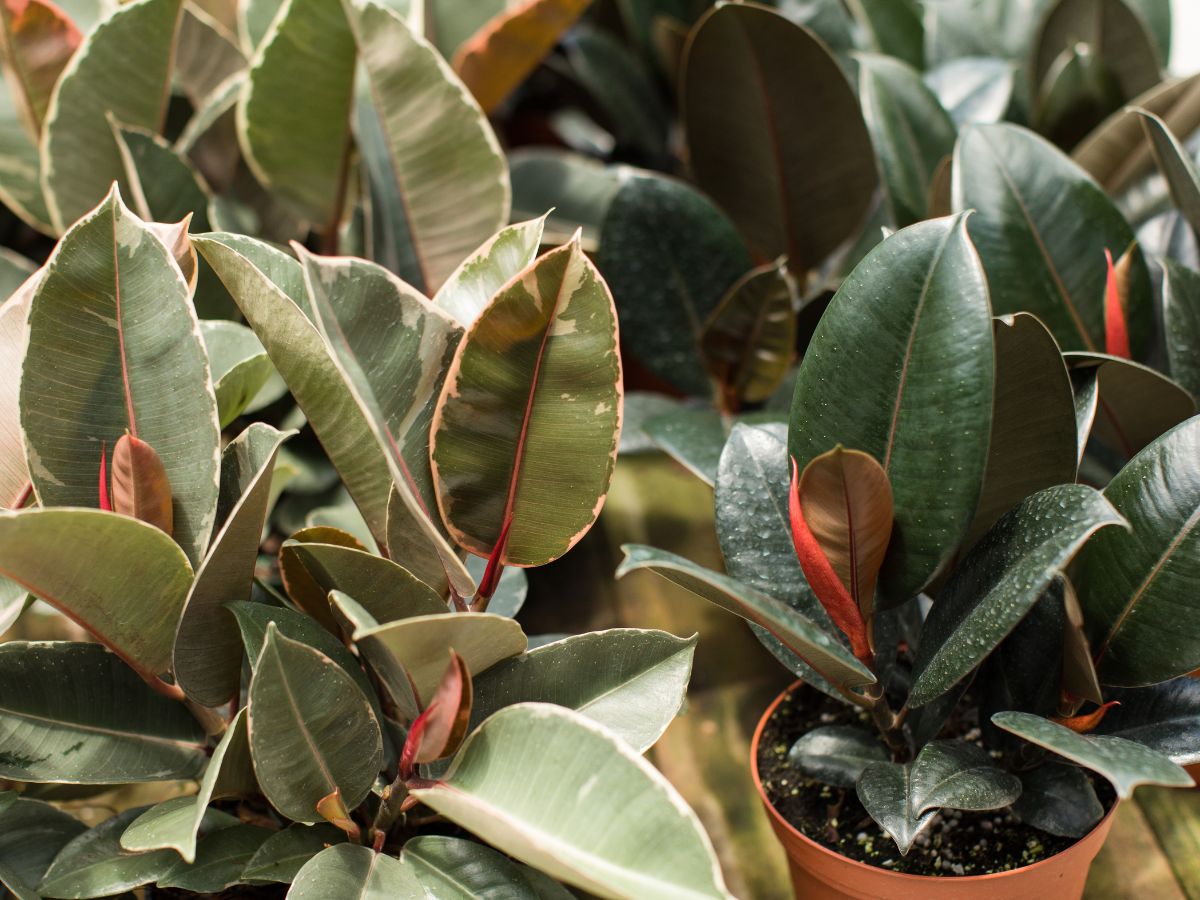
When your friends and family see how beautiful your rubber plant is, they’ll want one for themselves. Rubber plants are one of those plants that you can cut a bit from and set in the soil to grow, even though it doesn’t always work correctly. Allowing the sap to dry, immersing the cutting in rooting media, and placing a heating pad beneath the pot containing the cutting can all help you succeed.
Another approach, known as air layering, is cutting a hole in a healthy rubber tree houseplant, inserting a toothpick, and then packing damp moss around the wound. Then, to keep the moisture level high, you cover it with plastic wrap. Cut the branch off when roots develop and plant it.
Plant Transplant
Young plants are transplanted annually, and the best time for this is in spring or early summer. Older plants are transplanted when the roots of the rubbery ficus fill the entire pot – once every 2-3 years. The first sign is that the substrate in the pot is depleted and needs to be replaced if the water flows too quickly into the pan during irrigation. Each subsequent pot for rubber ficus should be 4-5 centimeters larger in diameter and 5-6 centimeters deeper than the previous one. If the plant is too old, and you are worrying that repotting can kill it, replace the top 3 cm of potting soil every year with a fresh one.
Is Rubber Plant Toxic to Humans and Animals?
Animals are pretty smart creatures. However, not always young cats, dogs, hamsters, and others can see the danger lurking in a plant. For pets, rubber plants are toxic, just as they are for humans. You need to understand that a person simply touches the milky sap with his hands (if he touches it), and the animal tastes it.
Therefore, it is best to put such plants somewhere on furniture where pets do not have access. Although, as practice shows, animals practically do not show interest in this plant. The reason is that in most species the leaf plates are dense, and sinewy, while in some, on the contrary, they are small and inconspicuous. Neither cats nor dogs are interested in such plants.
Potential Growing Problems
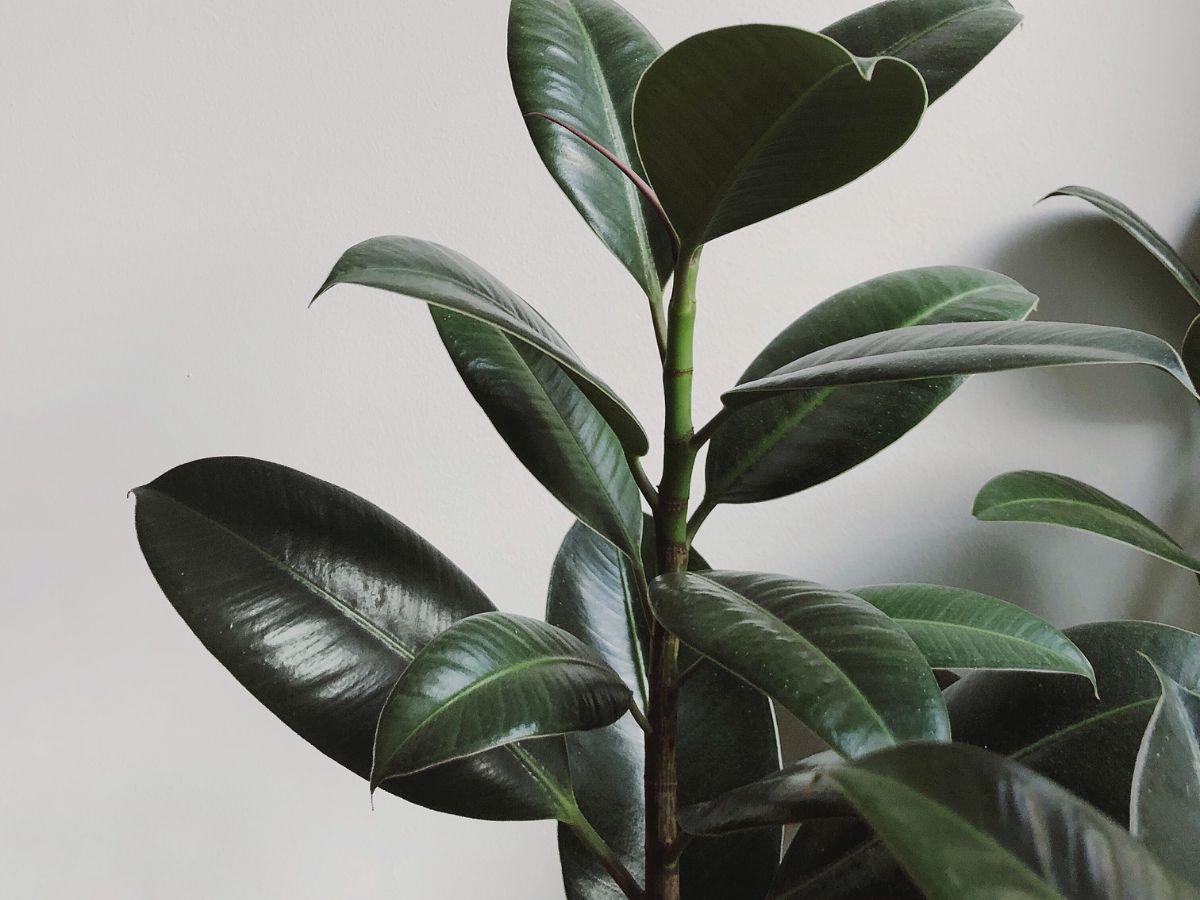
Why Is My Rubber Plant Dropping Leaves?
If only the lower leaves of a rubber tree fall off, then this is a natural process for any plant. But if not only old leaves fall, then there may be several reasons:
- excessive soil moisture;
- overdried earthen lump;
- cold draft or sudden temperature change;
- bad light.
Rubber Leaves Plant Turning Yellow
Why do yellow leaves appear on the rubber plant? Because the conditions of its maintenance and the rules of care are violated. Possible reasons:
- excess fertilizer in the soil – this can be corrected by washing the substrate using top irrigation with an amount of water equal to three times the volume of the ficus pot. After this procedure, do not feed the plant for two months;
- too much salt in the substrate. In this case, only transplanting the plant into a new soil will save;
- pot too large for the plant – transplant the plant into a smaller container;
- rotting of the root system – if the soil smells of rot, you will have to remove the plant from the pot, remove the rotten roots, and transplant it into fresh soil. If it’s not too late.
Why Rubber Plant Leaves Curling?
The most common reason for rubber plant leaves curling is usually an issue with watering. Unfortunately, both underwatering and overwatering can cause this. Allowing the soil to dry somewhat between watering is vital since you don’t want your plant to sit in moist soil. However, because this is a tropical plant, it’s also critical not to allow the soil to become completely dry.
Why Is My Rubber Plant Drooping?
A shortage of sunshine might be indicated by drooping foliage. Although watering concerns are the most prevalent reason for drooping rubber plant leaves, insufficient sunshine may also be a factor. Rubber plants require a lot of bright, indirect light to grow.
Plant Diseases
Ficus rubber diseases are an extremely unpleasant phenomenon. Many diseases of this plant can be caused by pests. The most common insects that the owner of this plant encounters are spider mites, scale insects, and nematodes. To fight diseases, special preparations are used, and beetles are destroyed with soapy water.
Large leaves of the plant must be kept clean by wiping them from time to time with a damp sponge. Once a month, it is advisable for the plant to arrange a refreshing shower. To make the natural shine of the leaves even more expressive, the use of special wax-based products is allowed. At home, a well-groomed rubber plant can be a staple in a space, but due to the irritating properties of its sap, we strongly discourage keeping it within reach of children or pets.


